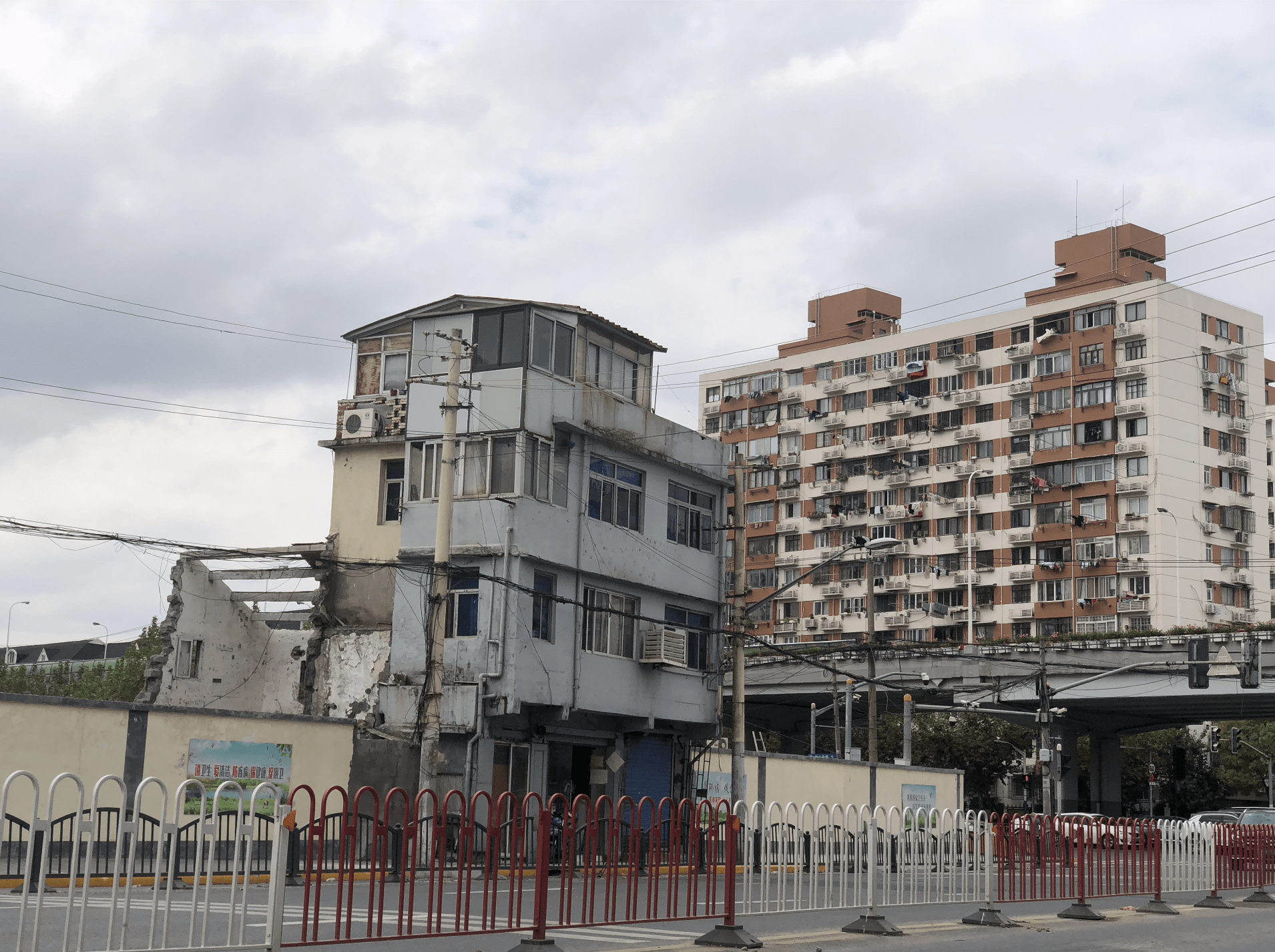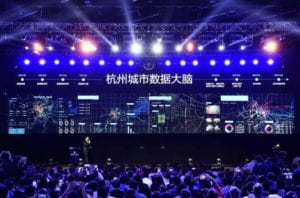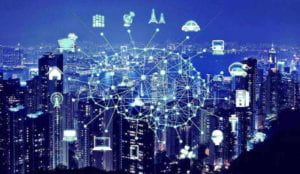In recent days, while I was walking on the streets, recently I saw a lot of workers of Meituan or Eleme, they were adverting for their new online market service, which is pretty similar to the delivery service. People can use the app to purchase the fresh food or fruit through the apps. Before Meituan, there already are Dingdong and Hema, which are supplying the same service, now there are more. And it is at the same time, I saw a lot people in the online forum Zhihu, which is Chinese edition of Quora. Also, many people notice such phenomenon. But I think it is different from the delivery war happened in the past years, which happened in the year 2016. It is same that, those big companies had flowed to the supermarket industry, what make it different is that, now we notice it and worry about it.
Though it is true that, we can receive a lot bonus and benefits from purchasing the food or fruit while these big companies are competing for the supermarket delivery service, we also always know is that, there will be many supermarkets or wet markets around our living areas will disappear recently. Eventually, as more and more people begin using the apps to have daily supplies, we would rely on the apps more, and then the industry then, like food delivery industry, becomes oligopoly.
Some people in the forum mock that, now all Chinese’s lives cannot be separated from the two “Ma”, which represents Huateng Ma and Yun Ma. It is true that all these businesses are ran in a formal way, and it is also true that, such services make the city more efficient. However, it makes us feel so powerless that, we actually cannot make the selection of the changes. We cannot decide it even though we ourselves are the residents of the cities. City formalities are decided by the big companies, but not us. But what they have done is so reasonable and formal.
Facial Recognition : Power Embed Technology| Kefan Yao(ky1284)
While you walking in the streets, or using smart phones, your facial and vocal information is collected by the camera above your head and the microphone on the bottom of the phone. Facial recognition has gained fierce discussion recently in China, always followed with ridiculous news like “Family Carries Paralyzed Old Man on Stretcher to Bank for Facial Recognition Authentication” “ ALERT! These apps are stealing your facial data…..”, etc. People are concerned about the widespread use of facial recognition, while smart phones and payment apps are all using facial recognition as the confirm-act method. What’s more, during the COVID-19 pandemic, facial recognition technology was also used for public health surveillance. In the workplace, facial recognition technology has been used to detect employees with fever and ensure that they wear masks. In Russia, surveillance cameras with facial recognition can monitor people who are isolated or who are self-isolated. In China, facial recognition technology is used to scan a crowd for signs of fever and can be used to identify people while wearing masks.
We can see that facial recognition nowadays is working in 2 areas: government public services and commercial consumer area. The latter is now the bigger market for facial recognition. Facial recognition is replacing various forms of old technology. For example, it replaces password or fingerprint in the field of cell phone unlocking, replaces the operation of third-party payment accounts in the field of payments, and replaces the traditional access card technology in the case of access to your apartment. However, in business scenarios, the suppliers of facial recognition technology have different technical capabilities, among which high-volume suppliers do not have the ability to develop facial recognition technology from the ground up, but only procure the corresponding SDK package through the upstream. Without the technical capability itself, there is no way to protect the security of user data. So large amount of data owned by these suppliers is in huge risk.
During this process, the private tech firms are also trying to embed their rules, their standards within the digital technical infrastructure. This indicate that the power is embed in the technical issues. Power is in rule setting, in standard setting.
This phenomenon has gradually been noted by the authorities. The “Personal Information Protection Law (Draft)” is closed for public comment process on November 19, which means the law enforcement is around the corner. This law makes provisions regarding facial recognition. The same, regulations put upon tech corporations gradually enact. Especially in China, in the economic system of government intervention to regulate the market, this power shift is inevitable, but here also comes a more dynamic convergence of technology, politic and economics.
Analogies in Human and Inhuman Systems| Kefan Yao (ky1284)
In the video of “Beyond Smart City”, Professor Emerita talked about the three key economic imperatives that defines the surveillance capitalism. The very first imperative is extracting data in volume. And the second is scope. She said, “It’s not only volume. We can find rich, new varieties of data from what people say, when they are talking and walking through the city, where they are going, what they are doing, whom they are doing it with. Our faces our bodies, our blood streams, our brains, all of these are new varieties of data and constitute new supply chains that are flowing into these factories.” The third is intervening system. She said, “The very best predictive data comes from actually intervening in the state of play.” In other words, people sometimes proactively engage with certain technology, however, this technology is in return influencing them at the same time since the data is immediately collected, analyzed and given feedback. People tend to think that humans are subject, but in fact, human beings become the object under digital data analysis. Here, she quote from a data scientist that “we can engineer the context around a particular behavior and force change. That way, we are learning how to write the music, and then we let the music make them dance.” This got me thinking.
We learn our own behavior systems and teach these skill to machines, making machines to imitate us, and finally, it is these machines (technologies) that are affecting our behavior in return. It sounds like a “Möbius strip”, which implicates the relation between human and technologies.
The city is like a conglomeration of technologies. People built huge cities piece by piece, and eventually it turns into a giant that beyond human control. A joke says that people think it’s a person walking a dog, while it’s actually a dog walking a person. It is very interesting that some people make analogy between technology and dogs here. The city is like a more intellectual species. I would rather compare it to the human child. Parents raise their children, but the children are not usually growing up the way parents expect. Children use dialogues, texts and acts to keep communicating with their parents, as the cities using neighborhoods, streets and space constructions to interact with their citizens. Children know their parents through long-time period together, observing and imitating, as the more and more smart cities know citizens through facial recognition, human-habits learning and adaption and all kinds of data collection.
I still remember an episode of black mirror called “social media”, in which people can see each other with a floating window above heads, showing each social likability and other parameters. It is exaggerate and imagined but has implications. In this digital era, we get to know someone by certain parameter——how many followers he/she has on social media, how high his/her Alipay rating and credit, how often he/she orders on Eleme/Meituan, etc. It seems that technologies, cities and all kinds of inanimate systems are learning us in this way as well. Human and inanimate systems get to know intellectual creatures in almost the same way. Human becomes mechanized, while machine becomes in intelligent.
Shantytown in Shanghai: Economic and Cultural Connotation|Kefan Yao(ky1284)
“The issue is not urban poverty. The issue is not the larger, over-arching thing. The issue is for us to recognize that these are neighborhoods—— this is legitimate form of urban development, and that cities have to engage these residents, because they are building the city of future.” Robert Neuwirth said in the video.
The “shantytown” in capitalist countries is to some extent different from that in China. In the video of “shadow cities”, migrants, or to say, squatters, in Turkey can build a house overnight and claim sovereignty over the land as long as they were not discovered by the authorities. With the house, they will not be evicted again. However, this is impossible in China where government owns the land. Shanghai has shantytown as well. Li Yanbo, an associate professor at Tongji University’s School of Architecture and Urban Planning, said, “If urban architecture erases it (the squatters), then the city of Shanghai is likely to be out of balance in the future, at a certain age and at a certain level.”
A few years ago, Shanghai began a shanty renovation, and at the same time, the renovation of group rental housing. Shantytowns and group rentals have always been closely related. The shantytowns are mostly concentrated in the northeast of Shanghai, scattered in Hongkou, Yangpu, and Zhabei districts (downtown areas are discussed here, the suburbs like Jiading, Qingpu districts are beyond the scope of this discussion). Most of these houses here are low-rise, old-fashioned buildings with no more than three stories along the street. I recent read about an article of a photography exhibition regarding Hongzhen old street in Hongkou district, which was the largest shantytown in the downtown area. A few years ago, I cycled past Zhou jia zui Road in Hongkou District, which has already begun to be rebuilt, and I was impressed by the dilapidated streetscape, which has now disappeared.

Similar situation can also be seen near Xin tian di. As you walk along Zhaozhou Road, you are switching views from fancy modern high-rise building and old-fashioned, low-rise huts. The Lao xi men neighborhood used to be one of my favorite places to go, because there are a lot of local snacks in that crowded shantytown. These streets is home to dozens of migrant workers from all over the country, and many authentic local flavors are bred in this neighborhood. Vibrant food cultures, local supermarkets and hardware store permeated with thick life breath, all kinds of informal economy flourished here.
Here we can see the hidden connections between the city’s inhabitants, their neighborhoods, and their economic patterns. In addition to physical connections, urban settlements also have a profound cultural connection with their inhabitants.
The term “shantytown” not only represents a material form of urban poor community, but also has been condensed into a cultural label for the urban underclass society and people, with rich connotations of urban poor culture and underclass immigrant culture.
In the creation of modern Haitian culture, the social identity of the characters is always unconsciously related to their housing location, i.e., the relative position of their living place in the urban space, as well as the type of hierarchy of the residential area. This makes it possible for the author to combine the social attributes of the characters, such as occupation, education, etc., with the geographic space in which they live, in order to observe the living conditions and social network of different social classes.
Cases of building telepathy cities in reality by Chu Li | cl5964
There are fantastical promises of awe and freedom of telepathy in contemporary telecommunications, telemetric and smart-dust-sensor technology, and urban-sensor connectivity. Intelligent communication ecologies consist of clouds and oceans. The transcendental poetics of machines that anticipate human needs and commands are celebrated in Jennifer Gabrys’ text Telepathically Urban, which explores sensor architectures and mobile smart-dust, extending early-twentieth-century radio, electromagnetic transmission technologies, and the long history of utopian futurist aesthetics. Smartdust can be linked to a telepathic understanding of the nineteenth-century interest in atomized ether and atomic dematerialization, as well as to the future development of tiny neurobiological sensors of neural dust. The high ambience of smart sensors, accompanied by florid promises of telepathy, relates to the invention and reinvention of telecommunications as it is accompanied by the invention and reinvention of telepathy.
In 2018, the telepathy city was selected as one of the top 10 breakthrough technologies in the world by MIT Technology Review. The city has been upgraded to be an “intelligent body” capable of sensing environmental information and human behavior data, and artificial intelligence has become a powerful force for urban governance and sustainable urban development.
Hangzhou was regarded as a successful example in dealing traffic troubles with a urban brain. The “Urban Brain” can monitor 24 hours a day, and the command center can be notified within 20 seconds of abnormal events, and the accuracy rate can reach more than 95%. Some old cameras have poor picture quality, and fuzzy scenes that cannot be recognized by the human eye can be recognized by the machine. This reduces the workload of traffic road patrols and frees traffic police from the trivial task of monitoring and controlling.

Thanks to the “urban brain”, Hangzhou Xiaoshan District has achieved priority dispatch of 120 ambulances and other special vehicles. Once the emergency point receives the call, the “urban brain” will calculate in real time, automatically allocate the timing of the signal lights along the route, and customize a green light lifeline for the ambulance. According to estimates, the time for an ambulance to arrive at the scene can be reduced by half.

While Toronto was trying to build a much more smart city than Hangzhou. Google’s Sidewalk Labs worked with the Canadian government to plan to create a high-tech community, Quayside, and rethink how to build and operate a city.
However, such intensive urban data collection and the increasing number of automatic operations also leads to growing concerns about privacy protection and the potential harm to human life and health caused by machine errors.
Can there be a smart city for all? by Shiwen Li|sl7772
I recently read an article about “the seemingly smart city to the disabled people”. On the surface, those newly-appeared apps that aim to provide users with information on whether a restaurant, a cafe, or a shop has those features signaling that disability is welcome there. For example, a parking sign with the International Symbol of Access, a wheelchair ramp, an automatic front door, a wide bathroom stall with grab bars and so on. People use these apps to document these features and all the information will be gathered in a database to later help others find accessible locations. Through collective efforts, these apps that have digital-accessibility maps are assumed to serve the purpose that “user-contributed data can provide information quickly while simultaneously educating the public about accessibility best practices.”
However, despite the good intentions, these apps that feature accessibility maps sometimes presume a binary kind of accessibility. Many people are simply asking the question if a place is accessible. Some only ask for wheelchair access, thus ignoring other kinds of disabilities such as those related to sight, hearing, cognition, chronic illness or chemical sensitivity. For example, people who move by walking would not notice how hard it is for a wheelchair to turn around inside a small space like a bathroom, or people who are not sensitive to certain lightings are likely to ignore that some flickering lights could cause seizures. Similarly, whether staff are fluent in sign language or whether menus and signs appear in braille are all information that is not included in the data for those digital accessibility apps.
Also, most the data of smartphone accessibility apps are primarily visual and textual, which creates potential barriers for users who are visually impaired or have sensory-processing disabilities.
There is a long way for these apps to go. They can collect and present information in multiple sensory formats instead of relying entirely on visual representations of data. Deeper digital-accessibility apps should be able to offer both audio and visual description of a place, real-time information about maintenance or temporary barriers, street views, and even video recordings. These features are not yet present in most digital accessibility apps partly because “they built upon digital-mapping tools that assume that a view of streets and storefronts is sufficient.”
One final threat to disability advocacy in smart city environments is that although these apps can make cities more navigable, they do not change the material features of that environment. They are recording current conditions rather than advocate for better ones. Making new environments in which accessibility becomes the norm but not the few exceptions is what digital mapping apps should do, not juts recording the world as it is today. A smart city is smart in real sense only when it is smarter and better for all.
Read more here about how smart cities can help people with disabilities.